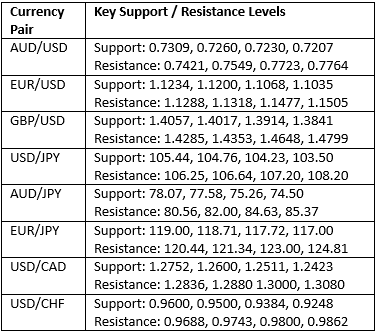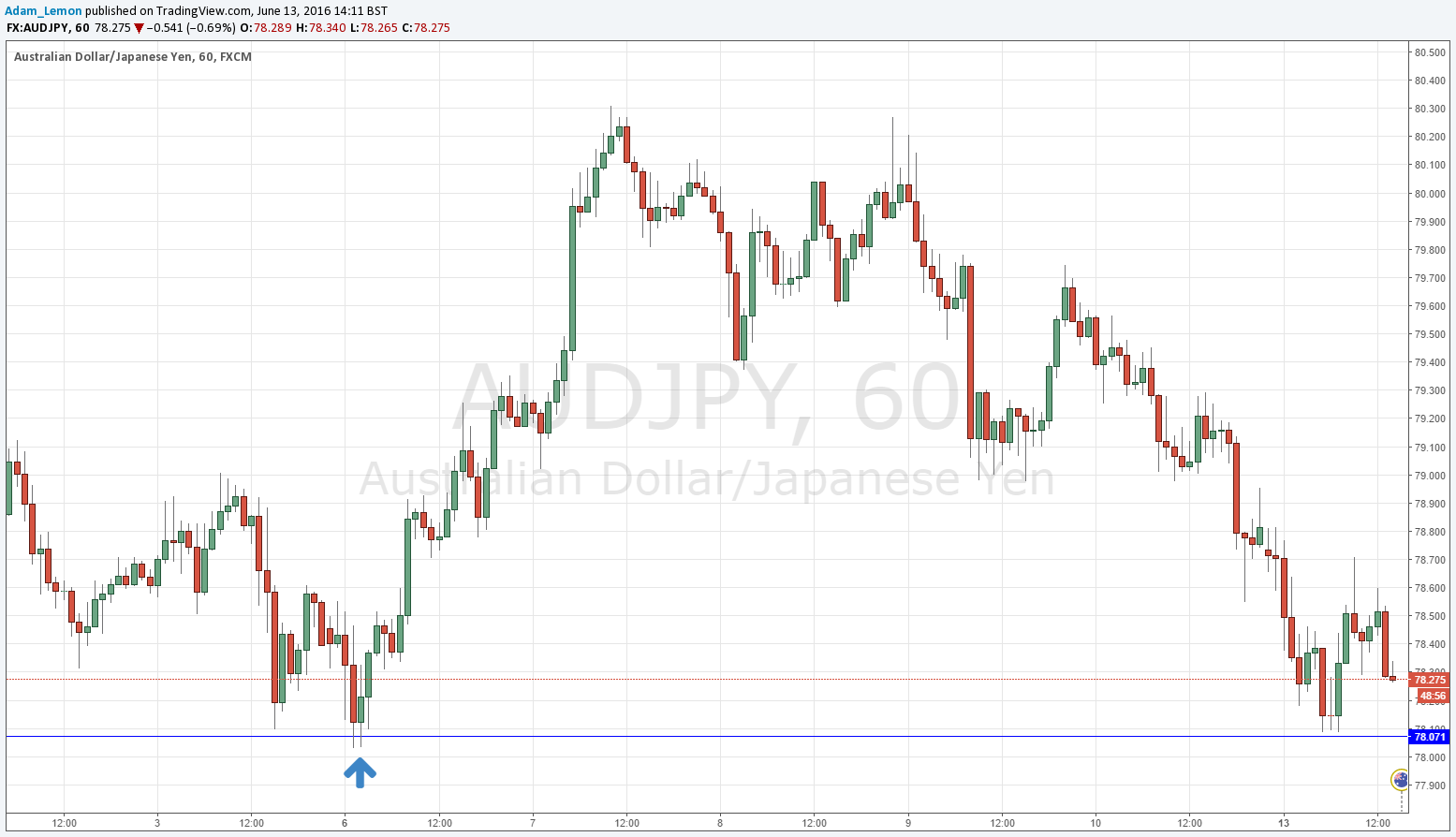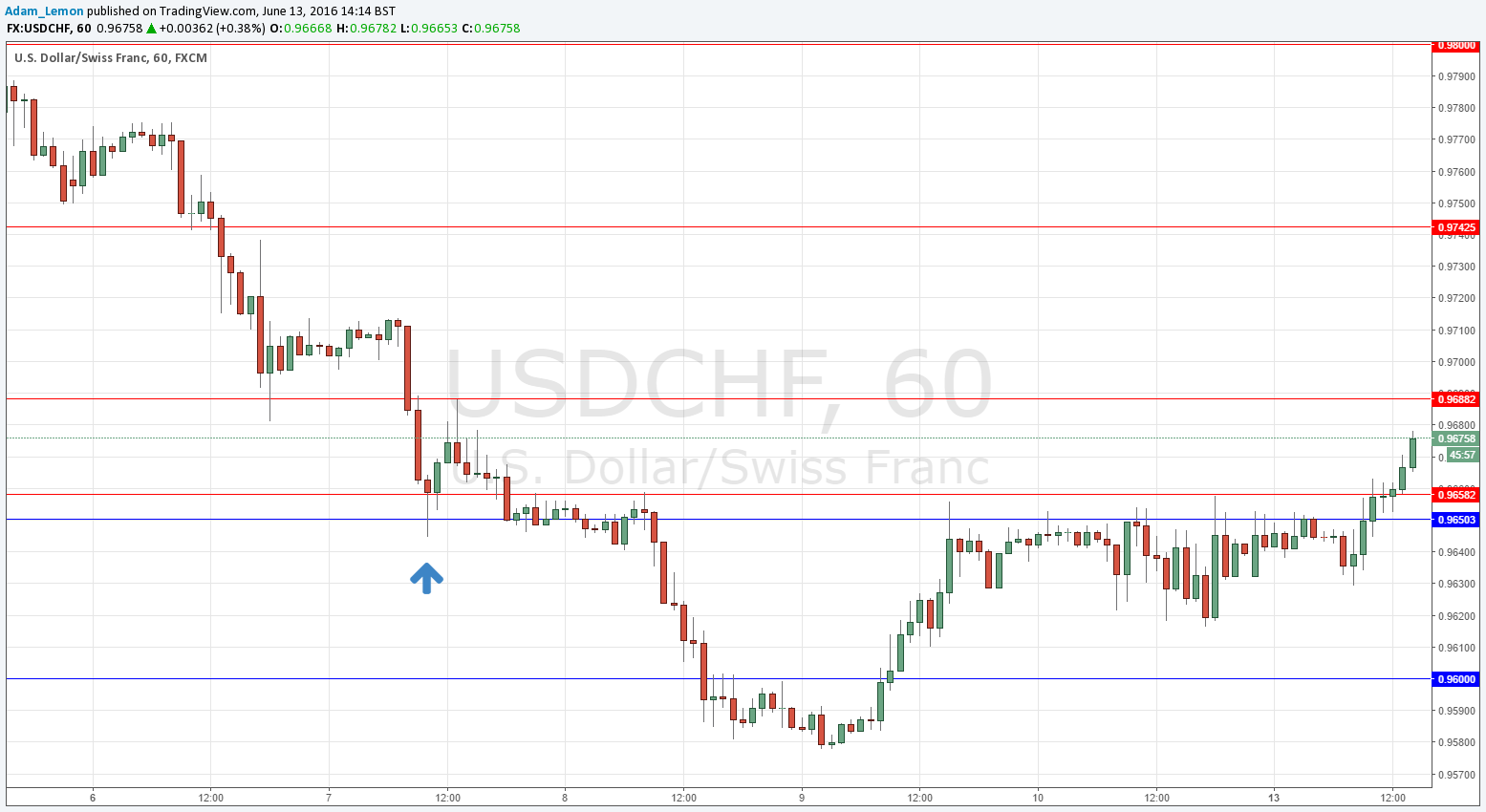This week we’ll begin with our monthly and weekly forecasts of the currency pairs worth watching. The first part of our forecast is based upon our research of the past 11 years of Forex prices, which show that the following methodologies have all produced profitable results:
Trading the two currencies that are trending the most strongly over the past 3 months.
Assuming that trends are usually ready to reverse after 12 months.
Trading against very strong counter-trend movements by currency pairs made during the previous week.
Buying currencies with high interest rates and selling currencies with low interest rates.
Let’s take a look at the relevant data of currency price changes and interest rates to date, which we compiled using a trade-weighted index of the major global currencies:
Monthly Forecast June 2016
This month, we forecasted that the best movements will be short USD/JPY, and long EUR/USD. The performance so far is positive:
Weekly Forecast 13th June 2016
Last week, we made no forecast.
This week, we again make no forecast, as there were no strong counter-trend movements.
This week has been dominated by a renewed weakness in the British Pound and Euro, strength in the Swiss Franc, Canadian Dollar, and New Zealand Dollar.
Volatility was much greater than it was last week, with about 74% of the major and minor currency pairs changing in value by more than 1%. Volatility is likely to be even greater over this coming week.
You can trade our forecasts in a real or demo Forex brokerage account.
Key Support/Resistance Levels for Popular Pairs
At the FX Academy, we teach that trades should be entered and exited at or very close to key support and resistance levels. There are certain key support and resistance levels that should be watched on the more popular currency pairs this week, which might result in either reversals or breakouts:
Let’s see how trading two of these key pairs last week off key support and resistance levels could have worked out:
AUD/JPY
We had expected the level at 78.07 might act as support, as it had acted previously as both support and resistance. Note how these “flipping” levels can work really well. The H1 chart below shows the price fell to this level, just slightly exceeding the previous swing low at this same level, when it reversed. The price formed a bullish inside candle which immediately broke to the upside. The trade really took off, and eventually made a reward to risk ratio of approximately 8 to 1 if the stop had been placed just below the swing low.
USD/CHF
We had expected the level at 0.9650 might act as support, as it had acted previously as both support and resistance. Note how these “flipping” levels can work really well. The H1 chart below shows how the price fell heavily to this level before bouncing bullishly with a pin candle that immediately broke to the upside. However the trade was really not a success, and over the next few candlesticks the market looked to be signaling its intention to move lower. Sometimes it is a good idea to get out of a trade if the next several candles all have strong wicks against the desired price direction before the stop loss is triggered.
You can trade our forecasts in a real or demo Forex brokerage account to test the strategies and strengthen your self-confidence before investing real funds.





